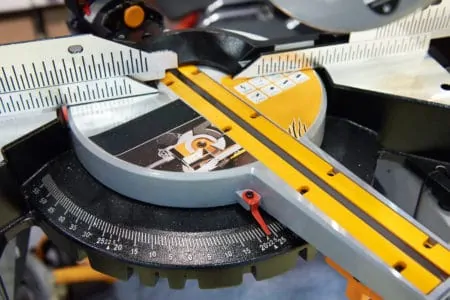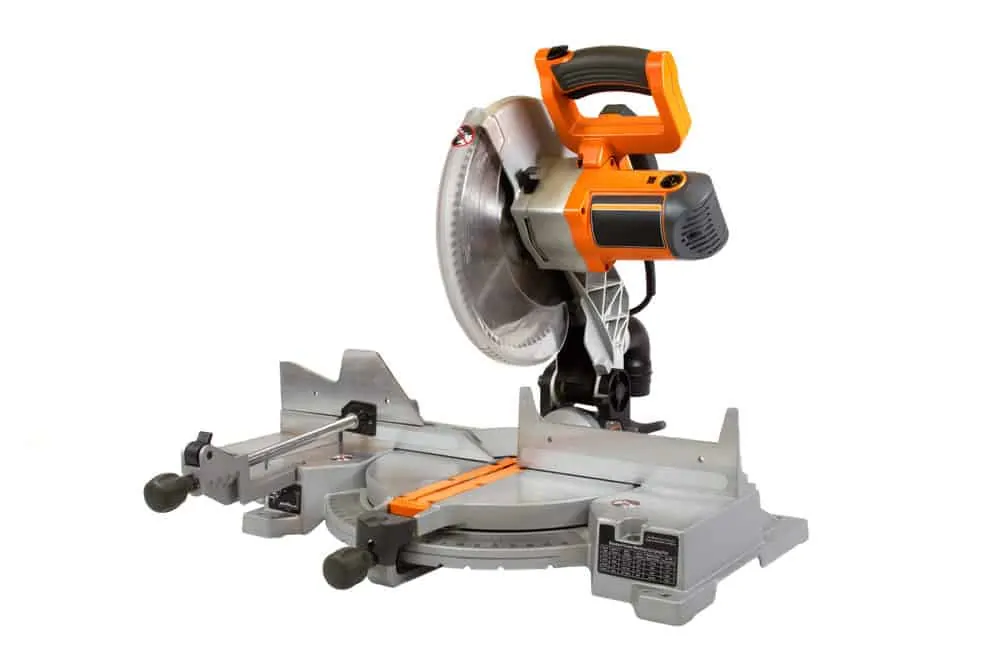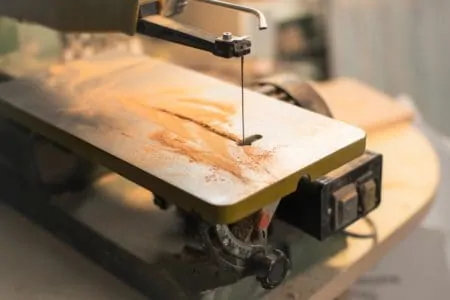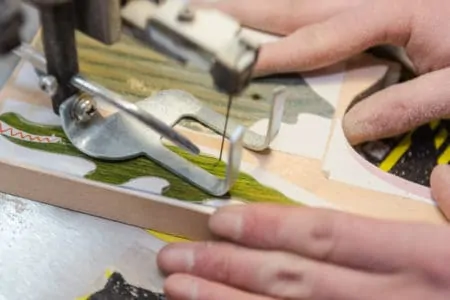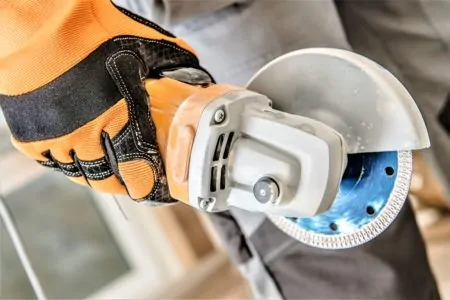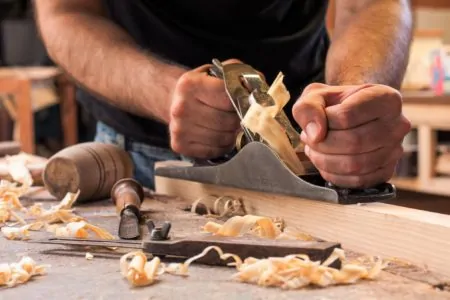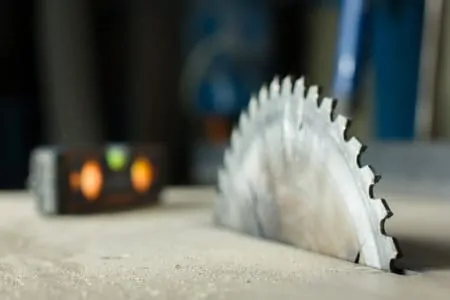If you are looking for a saw that provides accuracy, convenience, and versatility, miter saws are tough to beat. They enable you to make angled cuts without having to carefully measure your cutting angle by hand.
However, there are actually two types of miter saws: sliding and non-sliding. Both types have their own advantages and will be more suitable for different tasks, so it is worth taking the time to learn about them.
To help you make the right choice, this article will explore sliding vs non-sliding miter saws. This should ensure you can buy an appropriate saw for whichever task you are working on.
Key Takeaways
- Sliding miter saws have an extended range of motion for cutting wider materials, while non-sliding miter saws are better for cutting thicker wood.
- Both types of miter saws can make crosscut, angled, bevel, and compound cuts, but sliding saws have a limited cutting arc.
- Non-sliding miter saws are generally cheaper, lighter, and easier to store, while sliding miter saws have a greater cutting capacity but are more expensive and bulkier.
- Choosing between a sliding and non-sliding miter saw depends on your specific project needs, such as the width of the material and the angles you need to cut.
What is a Miter Saw?
A miter saw has a circular blade mounted on a pivoting arm. They are designed for making angled crosscuts and bevel cuts, with many models allowing you to cut at 45 degrees and other common preset angles such as 15 and 30 degrees. Some high-end saws will enable you to adjust the angle in one-degree increments for much greater freedom when cutting.
Miter saws are generally easy to operate. You simply set the required angle, hold the stock snugly against the fence to keep it straight and secure, and lower the pivoting arm until the rotating blade cuts through the wood.
There are two main types of miter saws. These include the basic non-sliding version, which allows you to make bevel and angled cuts of up to 90 degrees. There are also sliding miter saws, where the saw can move along a rail, significantly increasing its cutting capacity.
Non-Sliding Miter Saw
Non-sliding miter saws can make four basic cuts:
- Crosscut
- Angled
- Bevel
- Compound
Non-sliding miter saws are ideal if you are installing crown moldings, baseboards, window or door trims, or you want to cut multiple frames relatively quickly. A non-sliding miter saw will also make short work of otherwise daunting amounts of trim work.
The maximum thickness of wood you can cut with a miter saw depends on its blade size, but it will usually be about six inches. Standard trim boards are four inches, so a miter saw will be very suitable for this task.
Pros
- Easy to use
- Powerful
- Quick
- Cuts acute angle
- Makes bevel cuts
- Accurate
- Occupies less space
- Cheaper than sliding saws
Cons
- Six-inch maximum cutting capacity
- Restricted cutting width
Sliding Miter Saw
As the name suggests, a sliding miter saw moves along a rail, allowing you to cut more extensive stock. This increased cutting capacity is beneficial if you are cutting wider molding, as you might find in older buildings.
Remember
With a sliding model, cuts as long as 12 inches or even 16 inches will be possible with one sweep of the miter saw blade. If you are working on a renovation project and need extra cutting capacity, a sliding miter saw will be worth the increased initial cost.
Pros
- Greater cutting capacity
- Better for wider materials
- Precise
- Quick
- Extended reach
Cons
- More expensive
- Requires greater skill to operate
- More complicated setup
- Heavier
- Bulkier
- Not suitable for cutting acute angles
Sliding vs. Non-Sliding Miter Saws
Choosing the right power tool is about more than simply finding the most powerful unit or the one with the largest capacity. If you are making crosscuts into smaller workpieces, you will need a miter saw that enables you to work quickly and accurately. That is where a non-sliding miter saw comes in handy.
They can cut to a depth that a sliding saw cannot match. On the other hand, you will be restricted in the width of the material you can cut. You can still make more extensive cuts, but you will need to turn the stock over and work from the other end to join the two cutting lines.
If you are renovating an older property, you will probably find that many of the moldings and baseboards are wider than their modern equivalents. This is where a sliding miter saw will be very helpful.
The rotating blade moves on rails, extending the reach of the saw by up to 16 inches. The trade-off is that, while you have an extended reach, you have less versatility with the cutting angles. You will need to decide whether you need longer cuts or the ability to cut acute angles.
Comparison Table
| Type | Sliding Miter Saw | Non-Sliding Miter Saw |
| Blade size | 10” or 12” | 10” or 12” |
| Range of cuts | Miter, bevel, angle, compound | Miter, bevel, angle, compound |
| Storage | Bulkier and more challenging to store | Small and easier to store |
| Portability | Heavy and less portable | Lightweight and easier to transport |
| Price | $$$ | $$ |
| Weight | 50 to 60 pounds | 25 to 45 pounds |
| Best for | Extended width, sheet material, and angled cuts | Thicker material, angled cuts, and bevel cuts |
